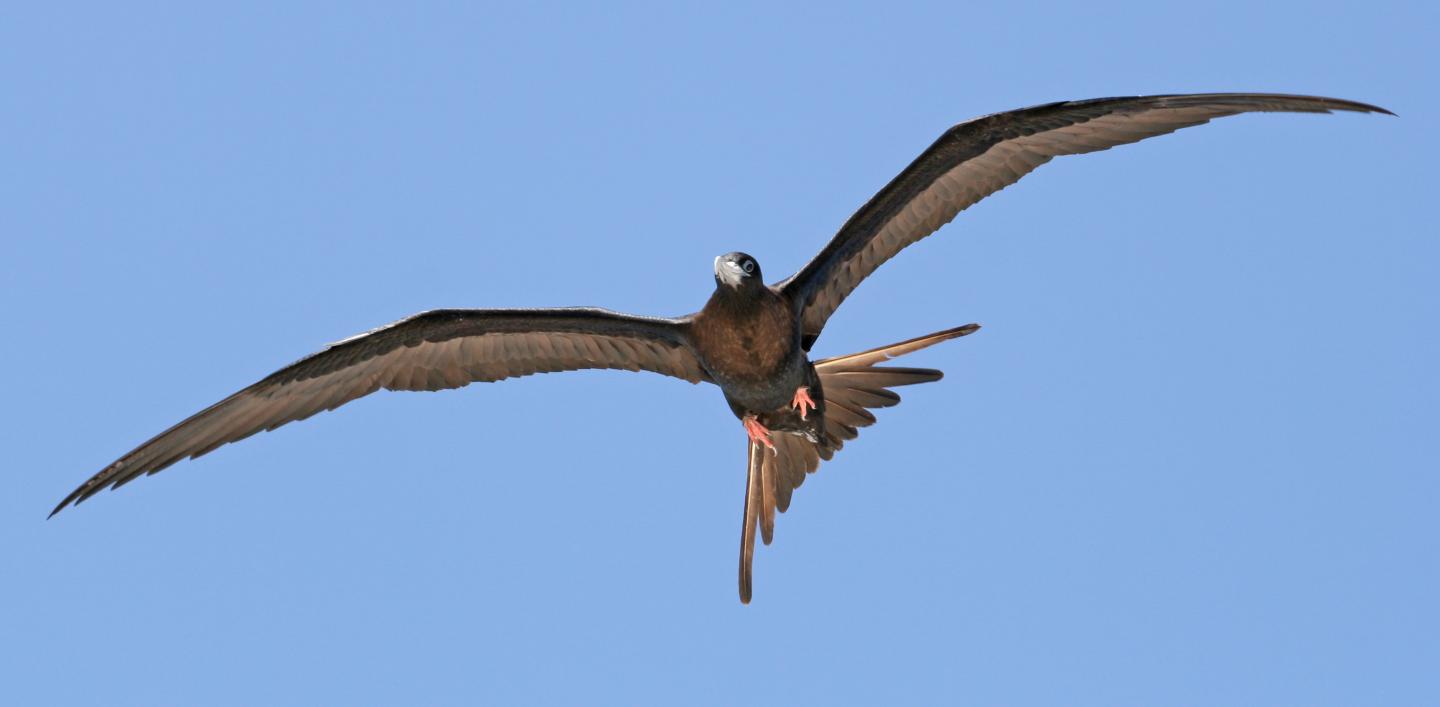
Credit: Sam Weber
A vast seabird colony on Ascension Island creates a “halo” in which fewer fish live, new research shows.
Ascension, a UK Overseas Territory, is home to tens of thousands of seabirds – of various species – whose prey incudes flying fish.
The new study, by the University of Exeter and the Ascension Island Government, finds reduced flying fish numbers up to 150km (more than 90 miles) from the island – which could only be explained by the foraging of seabirds.
The findings – which provide rare evidence for a long-standing theory first proposed at Ascension – show how food-limited seabird populations naturally are, and why they are often so sensitive to competition with human fishers.
“This study tells us a lot about large colonies of animals and how their numbers are limited,” said Dr Sam Weber, of the Centre for Ecology and Conservation on Exeter’s Penryn Campus in Cornwall.
“These birds are concentrated at Ascension Island during the breeding season, and the intensity of their foraging is naturally highest near the island.
“As they use up the most accessible prey located near to the island, they have to travel increasingly long distances to feed, causing the ‘halo’ to expand outwards.
“Once individuals can’t find enough food to break even with the energy they expend finding it, the colony stops growing.
“Human impacts such as fisheries can interfere with this natural balance and have negative effects on populations of marine top predators like seabirds, even if they don’t directly harm the birds.
“What was particularly surprising is the large scale of the footprint we found.
“It shows that Marine Protected Areas may need to be very large because some predators rely on prey stocks across a huge area.”
The pattern of prey depletion revealed by the study is known as “Ashmole’s halo”, after British ornithologist Philip Ashmole, who first proposed it about 60 years ago after a visit to Ascension Island.
For the study, the researchers counted flying fish, tracked seabirds’ foraging trips and examined their regurgitated food.
The nesting seabird species on Ascension that prey on flying fish include frigatebirds, masked boobies and brown boobies.
###
The research team included the RSPB and the Royal Netherlands Institute for Sea Research.
The study was funded by UK Government’s Conflict, Security and Stability Fund and by a Darwin Initiative grant.
The paper, published in the journal Proceedings of the National Academy of Sciences, is entitled: “Direct evidence of a prey depletion ‘halo’ surrounding a pelagic predator colony.”
Media Contact
Alex Morrison
[email protected]
Related Journal Article
http://dx.





